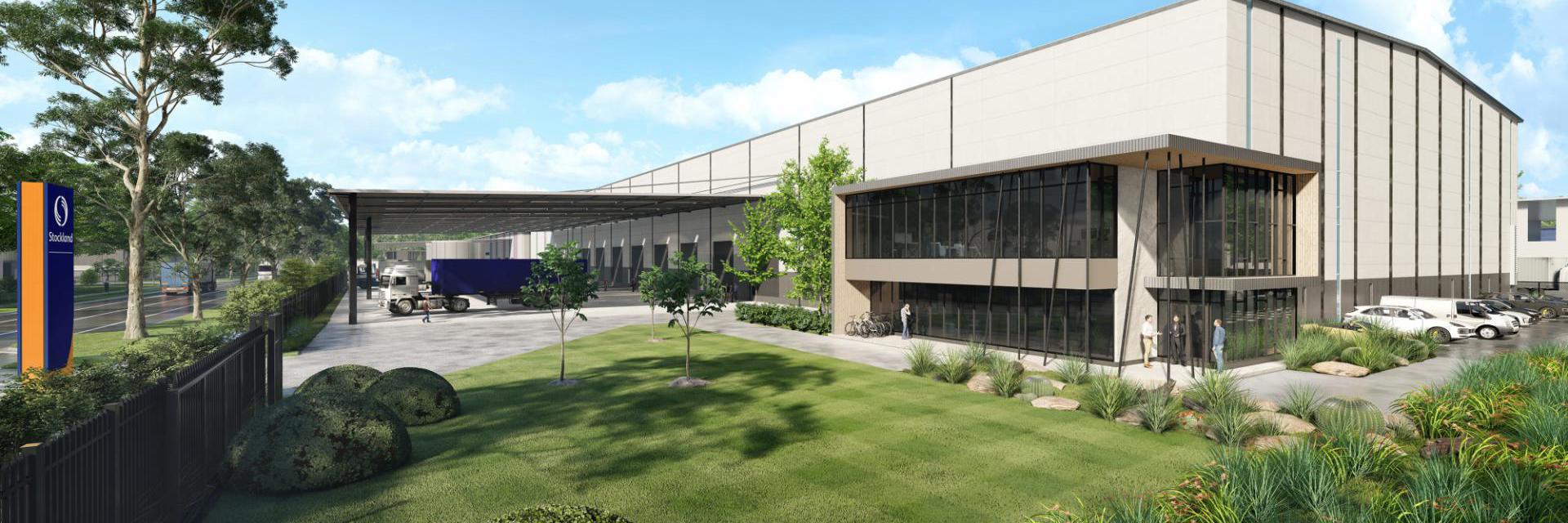High demand and limited spaces calls for creative thinking
Changes in consumer behaviour, growing e-commerce demand, and increased pressure on costs and labour have been some of the key drivers resulting in the current logistics landscape – and with limited supply in industrial land, it’s led the industry to think creatively in how businesses deliver to their customers.
A portfolio that can grow with you
As strategic property partners, we’ve been working closely with our customers to better understand their drivers and ensure our estates continue to meet their dynamic needs.
As an example, 43% of merchants are changing their shipping strategies to reduce the impact of global shipping delays1. There is also a shift to just-in-case inventory strategies from just-in-time, but this is also impacted by limited supply2.
In Australia, the national industry vacancy rate is at 0.8%. This makes Australia the world’s tightest logistics market3, driven by the increased demand for e-commerce services.
Stockland has responded to these challenges through a variety of strategies, like bolstering our development pipeline so we can continue to offer modern, flexible, and future-proof facilities in strategic locations with sustainability and flexibility key focus areas.
We have good coverage of Melbourne’s west across five of our estates, with availability in Melbourne Business Park. In Sydney, we’ve capitalised on the upcoming Western Sydney Airport and Aerotropolis with further stages of our Leppington Business Park and Ingleburn Logistics Park close to commencing construction along with some infill metropolitan Sydney sites earmarked for future development.
While in south east Queensland, construction is underway at Willawong Distribution Centre Stage 3, Yatala Distribution Centre Stage 3, and Yatala Distribution Centre South – these projects will incorporate solar power for reduced energy costs and will target green star accreditations.
Executive General Manager, Logistics, Tony D’Addona explains, says “One of the things that we pride ourselves on is assisting our customers with their growth, which is why it’s so important for us to have a diverse portfolio.
“By having a range of quality assets, we have the flexibility to allow customers to grow with us – the breadth and depth of our portfolio provides us the ability to shift leases, move tenants into bigger or more suitable spaces as they expand allowing us to cultivate long-term property partnerships.
“Drawing on our large portfolio allows us to create more options for our customers so we can work with them to optimise their footprint today and talk about what their growth opportunities might look like tomorrow,”.
Thinking outside of the shed
All these challenges and pressure from customer fulfilment requirements have prompted innovative thinking with some retailers dipping their toes in decentralised fulfilment models, where retail stores are used as mini warehouses to lower costs and get products to customers faster2. While it’s still a very new trend it is gaining ground in the grocery market and may grow into other retail segments1.
For instore fulfilment capabilities, retailers are repurposing back-of-home areas into package and shipping rooms while others are changing the fitouts with a combination model with the fastest-moving goods at the back1.
Stockland Executive General Manager Town Centres, Michelle Abbey confirms, “At our town centres, we’ve seen an increase in interest from our retailers in tenancy design and development to accommodate omni-channel approaches that allow for co-location of their storage and Click & Collect facilities."
Thinking outside of the square, we are recognising that retail and town centres can play a big role in meeting consumer demand and improving speed to market1.
While trends like this require investing in new technologies and redesigning operating procedures and physical spaces, it’s a creative way of thinking that’s bringing business and customers together.
Sources
- Beyond the distribution center - McKinsey & Company June 2022
- CBRE Market Outlook - CBRE, 2021
- Industrial rental growth hits 33-year high as Christmas pain looms - Australian Financial Review, 22 July 2022
